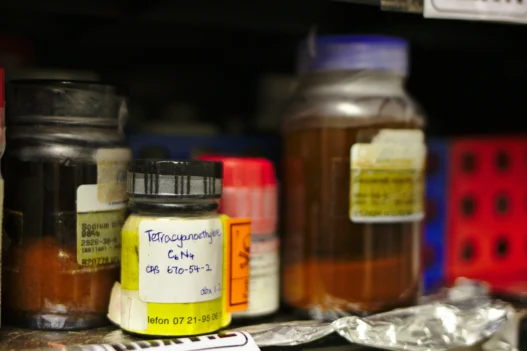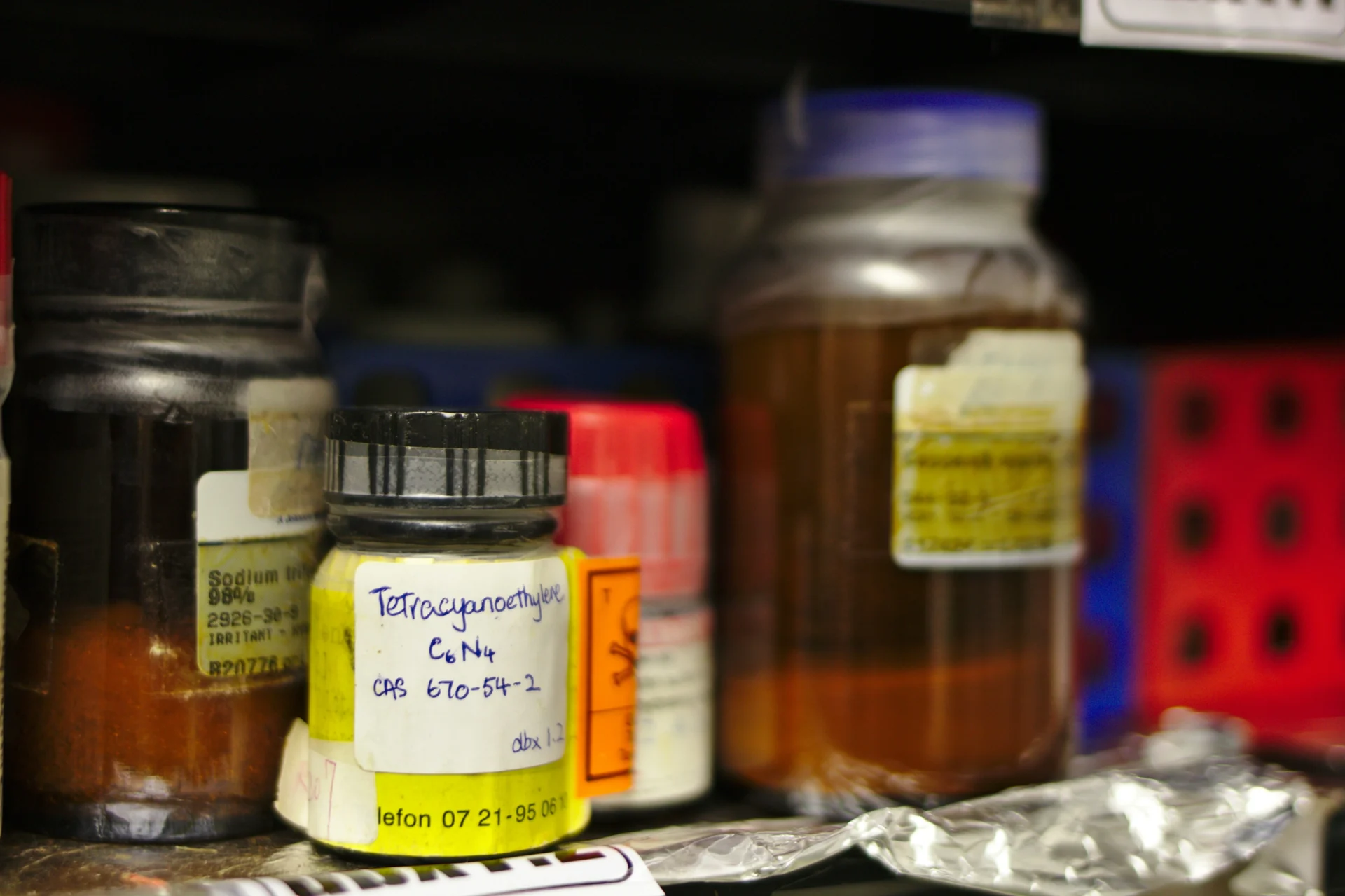Methadone, a synthetic opioid medication primarily used to manage pain and treat addiction to opioid drugs such as heroin, plays a significant role in everyday life for individuals struggling with substance abuse. By helping to alleviate withdrawal symptoms and lessen cravings, Methadone can provide stability and support to those seeking to overcome addiction and reclaim control over their lives. Additionally, Methadone is increasingly viewed as an essential tool in combating the opioid crisis that has affected communities across the country. Its availability and effectiveness represent a crucial component of efforts to address substance abuse issues and promote recovery and well-being for individuals and society as a whole.
Table of Contents:
- 💡 Commercial Applications
- ⚗️ Chemical & Physical Properties
- 🏭 Production & Procurement
- ⚠️ Safety Considerations
- 🔬 Potential Research Directions
- 🧪 Related Compounds
💡 Commercial Applications
Methadone, a synthetic opioid, has several commercial and industrial applications. One of the primary uses of Methadone is in the production of pharmaceuticals for pain management and opioid addiction treatment. Its long-acting properties make it suitable for providing sustained pain relief and alleviating withdrawal symptoms in individuals undergoing opioid replacement therapy.
In addition to its pharmaceutical applications, Methadone is also used in research and testing laboratories. Methadone is utilized as a reference standard for calibrating drug testing equipment and conducting experiments on opioid receptors. Its stability and well-defined pharmacological properties make it a valuable tool in the study of opioid pharmacology and addiction.
In the realm of drug and medication applications, Methadone is widely prescribed as a treatment for opioid dependence. Methadone maintenance therapy helps individuals with opioid use disorder manage their cravings and withdrawal symptoms, allowing them to function normally and focus on their recovery. The long-acting nature of Methadone reduces the frequency of dosing, making it a convenient and effective option for individuals seeking to overcome opioid addiction.
⚗️ Chemical & Physical Properties
Methadone is a white crystalline powder that is typically odorless. Its appearance can vary depending on how it is processed and stored.
The molar mass of Methadone is approximately 309.4 g/mol, and its density is around 1.0 g/cm³. These values are higher than those of common food items such as sugar and salt, which have lower molar masses and densities.
Methadone has a melting point of around 235°C and a boiling point of approximately 340°C. These values are significantly higher than those of common food items like butter and chocolate, which have lower melting and boiling points.
Methadone is soluble in water and has a viscosity that is relatively low compared to common food items like honey and molasses. Its solubility and viscosity are more similar to liquids such as corn syrup than to solid food items.
🏭 Production & Procurement
Methadone is a synthetic opioid medication that is produced through a chemical synthesis process. The primary raw materials used in the production of Methadone include various chemicals such as acetic anhydride, hydrochloric acid, and pyrrolidine.
The production of Methadone involves several steps, including the synthesis of the primary compound and subsequent purification processes. After the synthesis is complete, the Methadone is typically formulated into a liquid solution or tablet form for distribution.
Methadone can be legally procured through authorized pharmaceutical manufacturers and distributors. Once produced, Methadone is typically transported in secure, tamper-evident packaging to licensed pharmacies and healthcare facilities for dispensing to patients. Strict regulations govern the transportation and distribution of Methadone to prevent diversion and misuse.
⚠️ Safety Considerations
Safety considerations for Methadone include its potential for respiratory depression, especially when taken in high doses or in combination with other depressants such as alcohol. It is essential to emphasize dosage accuracy and monitor for signs of overdose, including slow or shallow breathing, dizziness, or extreme drowsiness. Patients should be warned about the possibility of Methadone overdose and educated on the importance of seeking immediate medical help if any concerning symptoms occur.
Hazard statements for Methadone include the risk of addiction, abuse, and misuse, which can lead to overdose and death. Methadone is a potent opioid that should only be used under the supervision of a healthcare provider to minimize these risks. Additionally, Methadone can cause respiratory depression and has the potential to interact with other medications, resulting in dangerous side effects. Patients should be made aware of these hazards and instructed on proper use and storage of Methadone to prevent accidental ingestion by children or pets.
Precautionary statements for Methadone primarily focus on the importance of keeping the medication out of reach of children and pets to prevent accidental ingestion. It is also crucial to inform healthcare providers of any preexisting medical conditions or medications being taken to avoid potential drug interactions. Patients should be advised to take Methadone exactly as prescribed, not to share it with others, and to safely dispose of any unused medication. Regular monitoring and follow-up appointments with a healthcare provider are essential to ensure the safe and effective use of Methadone.
🔬 Potential Research Directions
One potential research direction for Methadone is investigating its long-term effects on pain management and addiction treatment. This could involve longitudinal studies to assess the effectiveness and safety of prolonged Methadone use in individuals with chronic pain or opioid dependence.
Another area for exploration is studying the optimal dosing strategies for Methadone to maximize therapeutic benefits while minimizing potential risks of overdose and tolerance development. Research could focus on identifying the ideal dosage levels, frequency of administration, and monitoring protocols to ensure patient safety and treatment efficacy.
Furthermore, researchers may also investigate the potential use of Methadone in conjunction with other medications or therapies to enhance its effectiveness in managing pain and substance use disorders. Combination therapies could target different pathways in the brain to provide more comprehensive treatment options for individuals struggling with chronic pain or opioid addiction.
🧪 Related Compounds
One similar compound to Methadone based upon molecular structure is Levomethadone. Levomethadone is the levorotatory isomer of methadone, which means it has the same chemical formula but a different spatial arrangement of its atoms. Levomethadone has similar pharmacological effects to methadone, including its use as an analgesic and for the treatment of opioid dependence.
Another compound structurally similar to Methadone is L-alpha-acetylmethadol, also known as LAAM. LAAM is a synthetic opioid with potent analgesic properties and is used as a maintenance treatment for opioid dependence. Like methadone, LAAM acts on the same opioid receptors in the brain to produce its therapeutic effects. LAAM has a chemical structure similar to methadone, with slight variations in its molecular arrangement.
Buprenorphine is another compound that shares structural similarities with Methadone. Buprenorphine is a partial opioid agonist used for the treatment of opioid dependence and chronic pain. Like methadone, buprenorphine binds to opioid receptors in the brain, producing analgesic effects and reducing withdrawal symptoms in individuals with opioid addiction. Despite some differences in their chemical structures, both methadone and buprenorphine are important medications used in the management of opioid use disorder.








